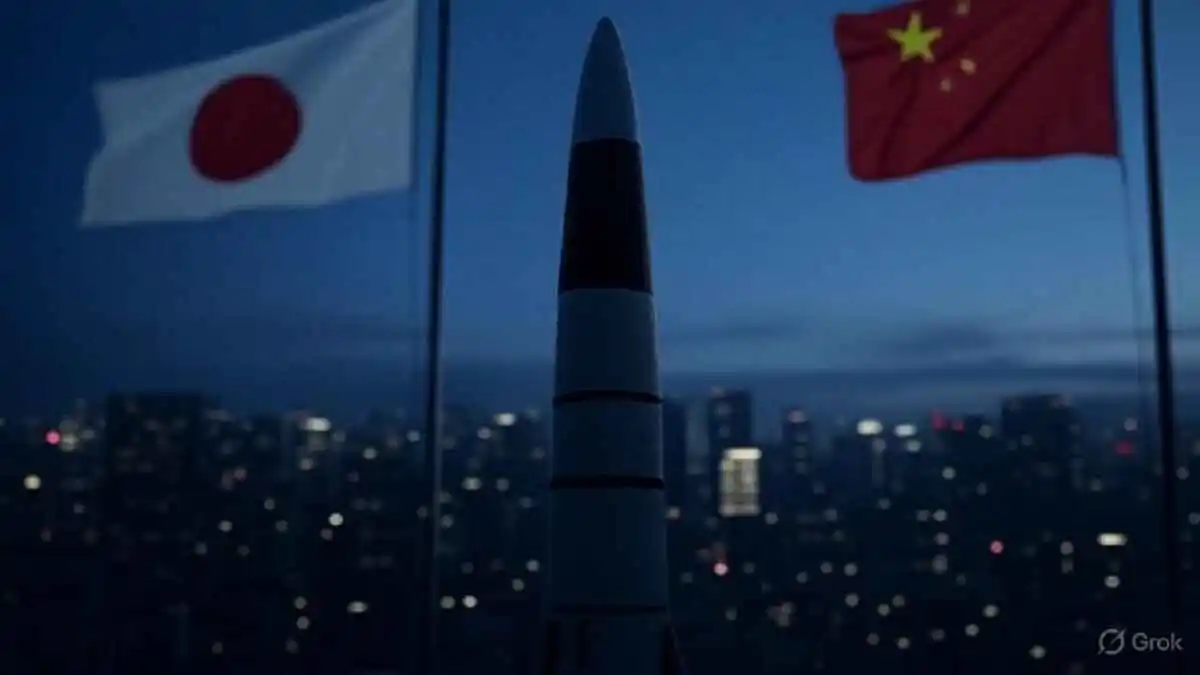A seemingly routine Japanese parliamentary exchange has ignited one of the sharpest diplomatic clashes between Beijing and Tokyo in years. Japanese Prime Minister Sanae Takaichi’s statement that a major armed incident in the Taiwan Strait could trigger Japan’s “right to collective self-defense” — potentially involving Japanese forces — has been branded by China as a dangerous revival of militarism. With heated rhetoric, veiled threats, and historical grievances resurfacing, many are asking: Is Asia’s most sensitive flashpoint pushing China and Japan toward open confrontation?
What Takaichi Actually Said (and Why It Matters)
During a November 7 Diet session, Takaichi clarified that while non-military actions (e.g., civilian blockades) around Taiwan would not qualify as a “survival-threatening situation” for Japan, armed attacks — such as warships firing on Taiwanese vessels — could. This aligns with Japan’s 2015 security legislation allowing limited collective self-defense when an ally (the U.S.) is attacked and Japan’s existence is imperiled.
Beijing’s response was swift and furious: State media accused Takaichi of echoing pre-WWII Japanese aggression slogans, with one diplomat posting inflammatory language interpreted as a personal threat. Tokyo demanded an apology and summoned China’s ambassador, while Japan rejected any retraction, calling the remarks consistent with longstanding policy.
This isn’t new — previous Japanese leaders have made similar hypothetical statements — but Takaichi’s explicit wording as sitting PM marks a rhetorical escalation amid China’s record military drills around Taiwan and Japan’s deepening security ties with the U.S. and Philippines.
Is It Really Escalating? Signs Point to Yes — But With Limits
- Diplomatic expulsions and summonses (rare but occurring)
- Surge in Chinese military activity near Japan’s Senkaku/Diaoyu islands
- Mutual accusations of “militarism” reviving painful historical memories
Yet structural restraints remain:
- Economic interdependence: China is Japan’s largest trading partner; Japan is a top investor in China
- U.S. alliance: Any major incident would pull in Washington, risking uncontrollable escalation
- Domestic politics: Neither leadership wants a full crisis derailing economic recovery
Analysts assess the risk of kinetic conflict as low (<10% in the next year) but the probability of sustained “gray-zone” harassment (air/sea incursions) as high (>70%).
- Regional Security Architecture Escalation accelerates Japan’s shift from pacifism: defense spending already hit 2% of GDP in 2025, with plans for counterstrike capabilities and deeper QUAD/AUKUS integration. A prolonged standoff could push Tokyo toward formal Taiwan contingency planning, effectively ending “strategic ambiguity” and forcing Southeast Asian nations to choose sides.
- Global Supply Chains and Technology The Taiwan Strait carries 50% of world container traffic and produces 90%+ of advanced semiconductors. Even limited disruptions could trigger a chip shortage worse than 2021–22, crippling automotive, consumer electronics, and AI industries. Japanese firms (e.g., TSMC partners) and Chinese manufacturers would face immediate relocation pressures.
- Energy Security Japan imports nearly all its energy; 80% of oil transits waters near potential conflict zones. Chinese “blockade” exercises — even as warnings — could spike LNG prices and force Japan into costly alternatives (Australian coal, U.S. LNG), accelerating its nuclear restart program.
- Economic Fallout Bilateral trade ($300+ billion annually) would suffer first from sanctions or boycotts. Japanese brands face consumer backlash in China; Chinese rare-earth exports (critical for magnets, batteries) could be weaponized. Global markets have already shown volatility on similar flare-ups.
- U.S.-China-Japan Triangle With Trump 2.0 incoming, Washington’s “strategic clarity” on Taiwan defense grows louder. Japan becomes the indispensable Indo-Pacific ally, potentially gaining more U.S. extended deterrence — but also becoming a bigger target.
- Historical Reconciliation Setback Anti-Japanese sentiment in China and wariness of China in Japan harden generational attitudes. Educational exchanges stall; tourism collapses. The 50th anniversary of normalized relations (2022) already felt hollow — this could bury reconciliation efforts for decades.
Containment or Coexistence?
China views any Japanese involvement in Taiwan as a red line — an attempt to contain its rise and revisit “century of humiliation” dynamics. Japan sees Taiwan’s security as existential: geographically 100 km from its southern islands, economically vital, and democratically aligned.
Escalation serves short-term domestic needs (nationalism boosts approval for both leaders) but risks long-term catastrophe. Quiet diplomacy — backchannel talks, crisis hotlines — has prevented past crises from boiling over.
Managed Tension, Not Open War
While rhetoric is at fever pitch, both sides have strong incentives to contain the damage. Expect more military posturing through 2026, accelerated Japanese rearmament, and colder economic ties — but not rupture. The real danger emerges if miscalculation (e.g., a mid-air collision or fishing vessel incident) overrides strategic caution.
In a multipolar Asia, China-Japan friction isn’t just bilateral — it’s a barometer for whether great powers can coexist or are doomed to collide. For now, the conflict is escalating in words and patrols, not weapons. But in the Taiwan Strait, words have a way of becoming reality faster than anyone expects.
